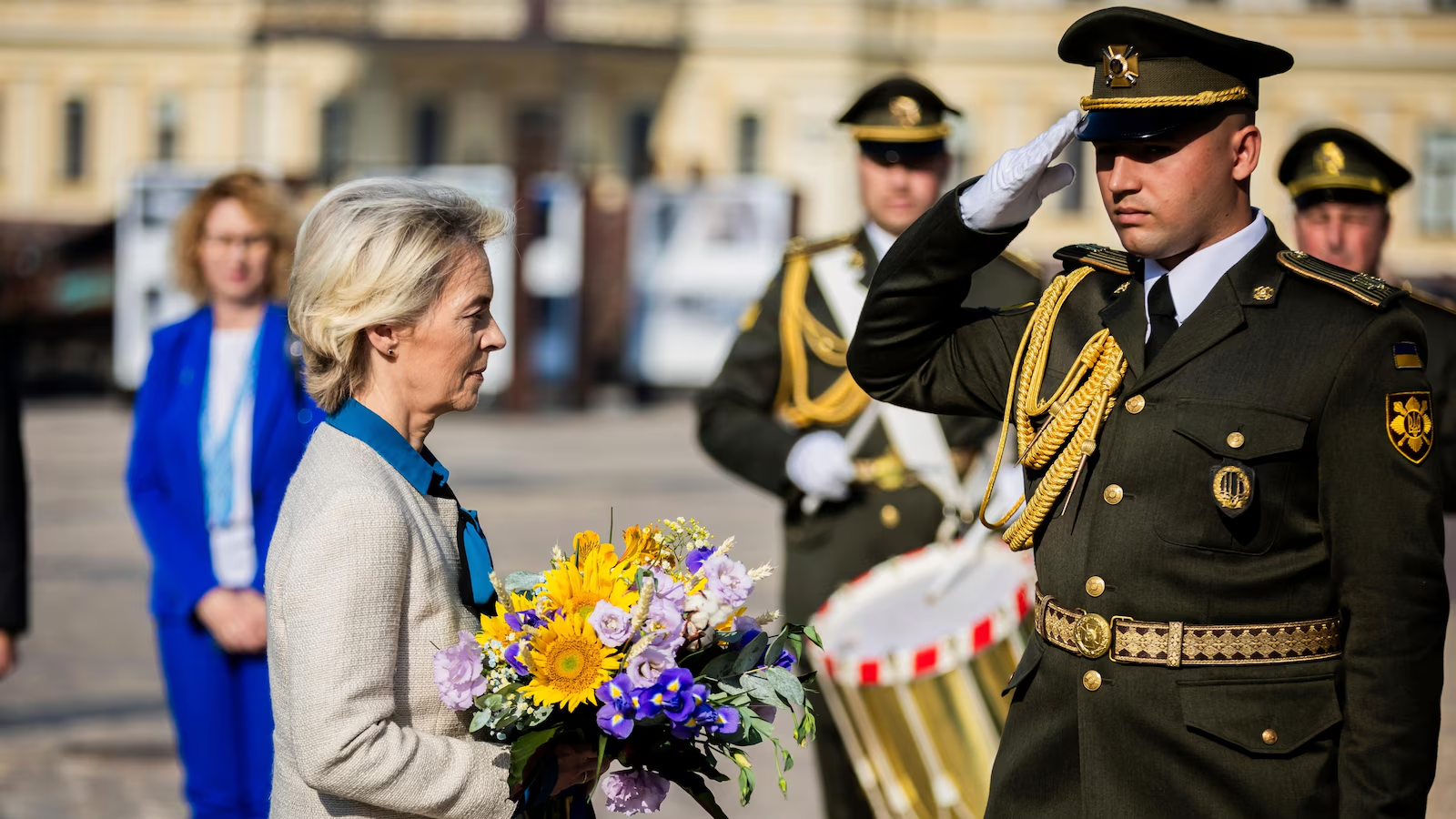The European Union has committed to lending Ukraine up to EU proposed $39b loan to Ukraine aimed at supporting reconstruction of its economy, power grid(35 billion euros) as part of a loan package coordinated by the Group of Seven (G7) major industrial nations, aimed at aiding the country’s economic recovery and rebuilding its war-damaged power grid.
In June, G7 leaders agreed to establish a $50 billion loan to support Ukraine’s ongoing struggle. Interest earned from Russia’s frozen central bank assets will serve as collateral, though progress on loan distribution has been slow.
European Commission President Ursula von der Leyen emphasized the need for accountability, stating, “We should make Russia pay for the destruction it caused,” during a news conference in Kyiv with President Volodymyr Zelenskyy.
Von der Leyen highlighted that the EU has already provided over $132 billion (118 billion euros) in military and economic assistance since the war began in February 2022, noting that “Russia’s relentless attacks mean further support is necessary.”
“This loan will directly enhance your national budget, improving Ukraine’s macro-financial stability and offering significant fiscal space. You will have the flexibility to decide how best to use these funds,” she added.
The loans will be backed by profits from nearly $300 billion in Russian assets that have been frozen due to its military actions in Ukraine, most of which are held in EU countries, particularly Belgium.
Von der Leyen expressed confidence in quickly delivering this loan to Ukraine and encouraged other G7 nations to follow suit.
President Zelenskyy outlined his priorities, which include rebuilding the energy grid, constructing more bomb shelters, improving schools, and procuring additional weapons and ammunition.
Von der Leyen’s visit to Ukraine focused on restoring the electricity grid and enhancing heating capacity as winter approaches. Half of Ukraine’s energy infrastructure has been damaged during the conflict, leading to rolling blackouts that leave parts of the eastern regions without power for hours at a time. Von der Leyen noted this situation is comparable to all of Latvia, Lithuania, and Estonia losing electricity.
As the heating season begins in two weeks, she reiterated the urgency of supporting Ukraine amid continued Russian attacks on its civilian energy infrastructure. The goal is to decentralize Ukraine’s power grid, reducing reliance on large power plants that are more vulnerable to strikes.
The EU has already sent over 10,000 generators and transformers and is providing smaller, mobile gas turbines, which are harder to hit and easier to repair.
Ukraine’s winter extends from late October through March, with January and February being particularly challenging. The EU aims to help supply about 25% of the 17 gigawatts of power that Ukraine will need this winter.
The assistance also aims to encourage residents to remain in Ukraine, as approximately 4 million people have fled since the war began, often seeking refuge in Poland and other neighboring countries. However, the number of those leaving has recently increased, with the European Commission estimating an additional 10,000 individuals applying for support each week.
On Thursday, the Commission announced an additional $180 million to bolster Ukraine’s energy network, with $112 million coming from the profits of frozen Russian assets. Denmark is also spearheading efforts to use these funds to procure weapons and military equipment directly from Ukraine’s defense industry.










